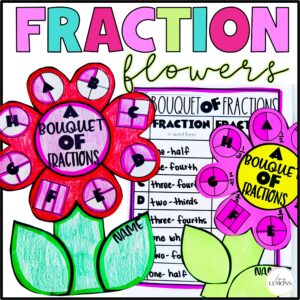
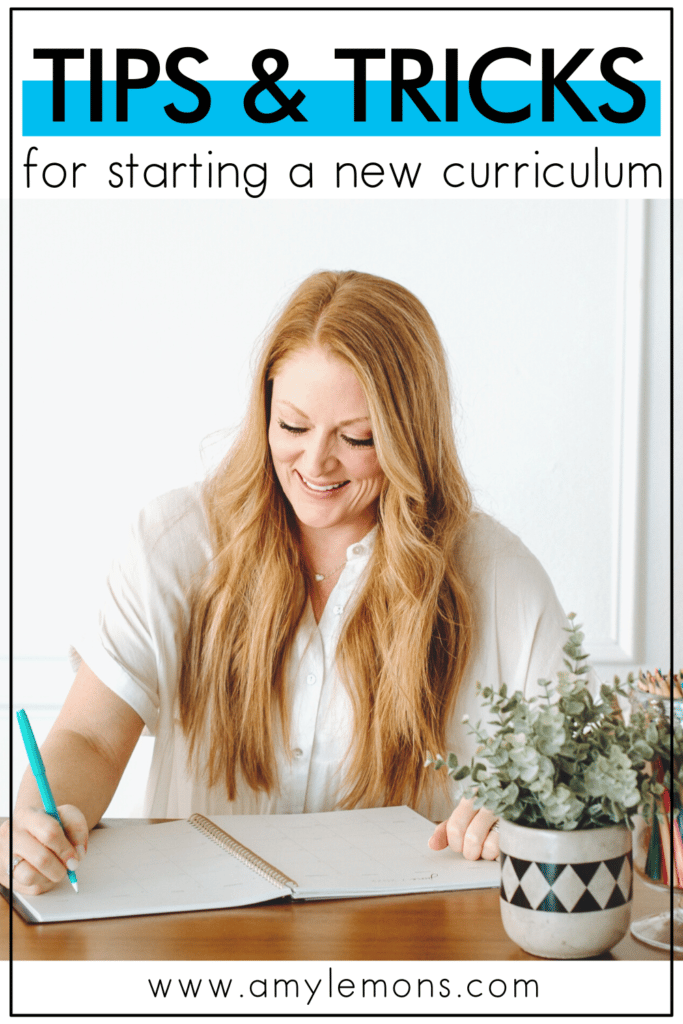
I recently conducted a survey in the FaceBook group for our reading curriculum, Rooted in Reading, in which I received over 100 responses from teachers with tips for starting a new curriculum in their classrooms. There were several gems for setting yourself up for success that can be applied to not only reading but any new curriculum added to your lesson plans.
I didn’t want you to miss out on these helpful tips, so I scanned through all of the replies to pull out the best of the best advice plus a few of my own ideas. One thing is for sure, starting a new curriculum takes patience and consistency. But most of all, it’s all about making it your own.

I know firsthand how exciting it can be when starting a new curriculum. But before you dive right in, take a step back and assess the needs of your classroom. You don’t want to immediately bombard your students with something unfamiliar. Ease your way into the lesson plans.
“Ease into it. Don’t try to do everything that is offered. RIR offers a lot of activities and trying to fit them all in at the beginning of the year will be overwhelming to your students and cause you unneeded frustration. Your students will need time to adjust and get back into the school routine.” – Rooted in Reading Teacher
Maybe you’ll choose to begin with 1 or 2 activities. Here are a few ideas:
Whichever you choose, the important factor is that you gradually add new activities each week or month until you’ve built a solid routine.
“Layer in your routines. I don’t do everything the first week but I do introduce my routines – like vocabulary- and set expectations. We do the quiz/check together the first time too. Setting expectations for sentence writing etc.” – Rooted in Reading Teacher
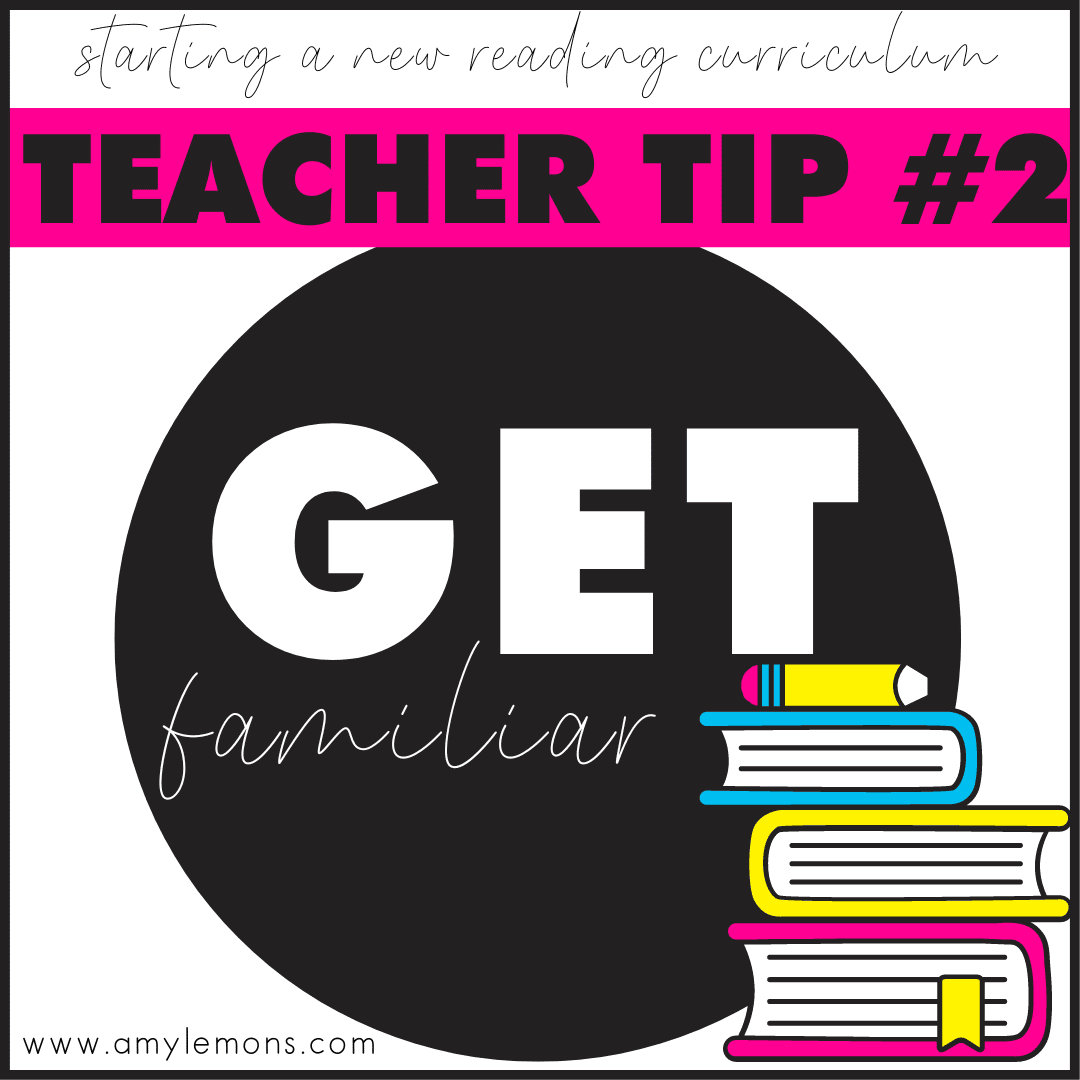
This is probably THE most important tip from the teachers, myself included. If you don’t take the time to read over the text, browse through each of the activities, and read through all of the comprehension components, you may find yourself overwhelmed.
This may seem like a no-brainer but you’d be surprised at the number of teachers who just print and go. Thankfully, this teacher has the right idea.
“Read everything, learn how to use it, and look at what you want to use for the week.”– Rooted in Reading Teacher
For instance, in our Rooted in Reading curriculum, we include many activities so that teachers have a bounty of choices for which will suit them best. This means that teachers have to take some time to see what is included and pull elements that craft the perfect setup for their students.
“We look at the year at a glance from our district and then see what books fall in line with what we are supposed to be teaching. We get a general outline of what books we are using and go from there. Then we can start pulling the materials we want to use.”– Rooted in Reading Teacher
The best way to accomplish this is to take time the week or two (or month!) before you plan to actually use the curriculum and craft an ideal week (alongside your team or partner if you have one). Focusing on the requirements for your district and other elements you’re interested in adding alongside them.
In Rooted in Reading, we include a mapped-out lesson plan for each week to make this even more seamless. You can choose to follow along with the included plans of your new curriculum or venture off and create your own learning path.
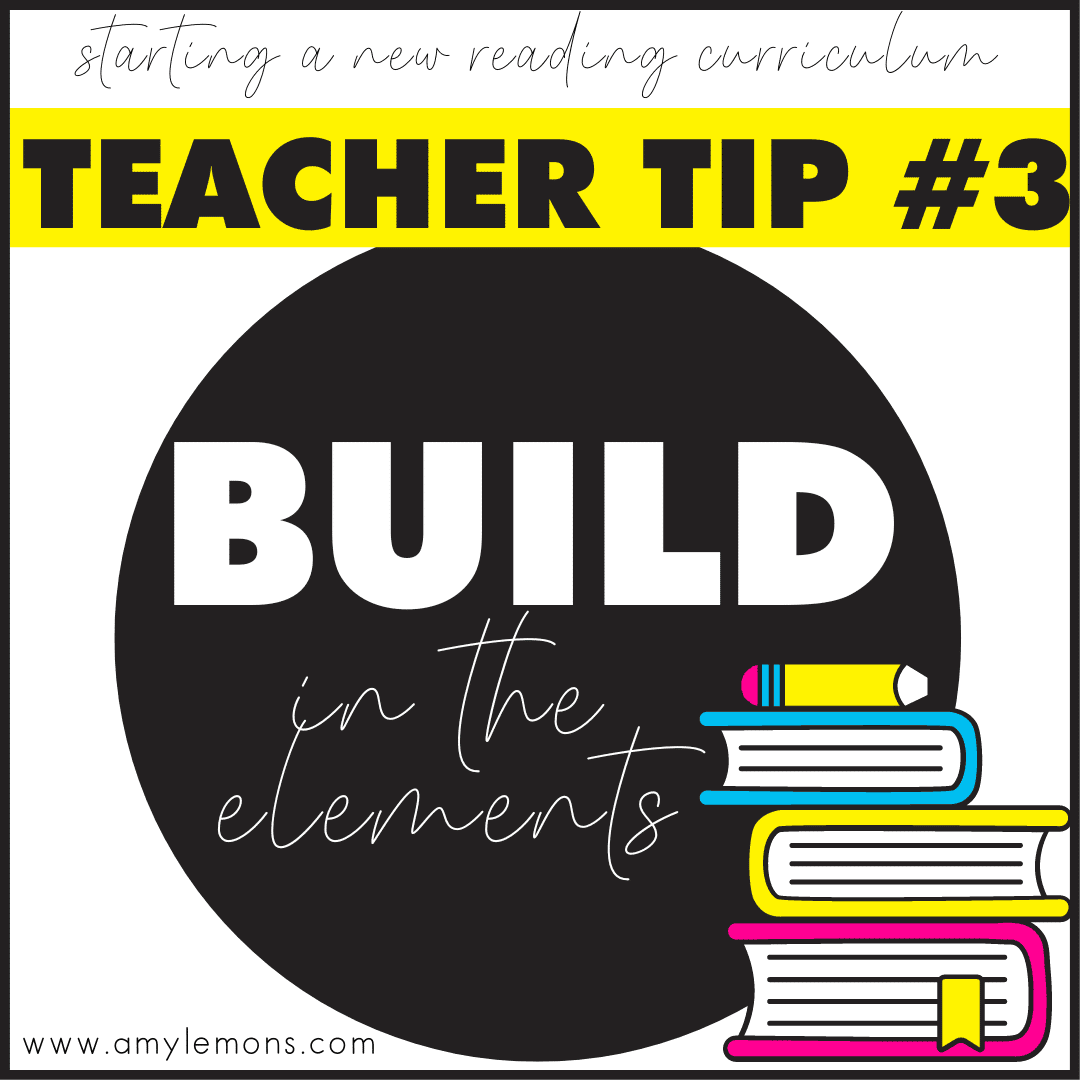
Once you have played around with one or two activities and gained a solid grasp on what features of the curriculum fit your classroom best, then you’re ready to build in the elements.
When you’re familiar with the curriculum, how it should be taught, what activities are most likely to fit in your daily schedule, and which way they should be taught to match your standard requirements throughout the year, then you’ll be able to dive deeper.
“Build in the elements. Start with comprehension so that kids don’t get overwhelmed with content then add in other elements as the weeks go on.” – Rooted in Reading Teacher
At this point, you can start adding in other elements. Using a new reading curriculum, for example, you can begin working on phonics or getting serious about grammar. This is also a great time to start bringing in other complementary elements.
For instance, in Rooted in Reading, we include a nonfiction reader and activities that combine the elements of nonfiction and the main story of the week. After you’re comfortable with the main text, then working in nonfiction can become a part of your lesson plans.
Consider that once you build in the elements you’re ready to tackle the year! But this can go downhill fast if you aren’t staying on top of all of your materials and schedule.
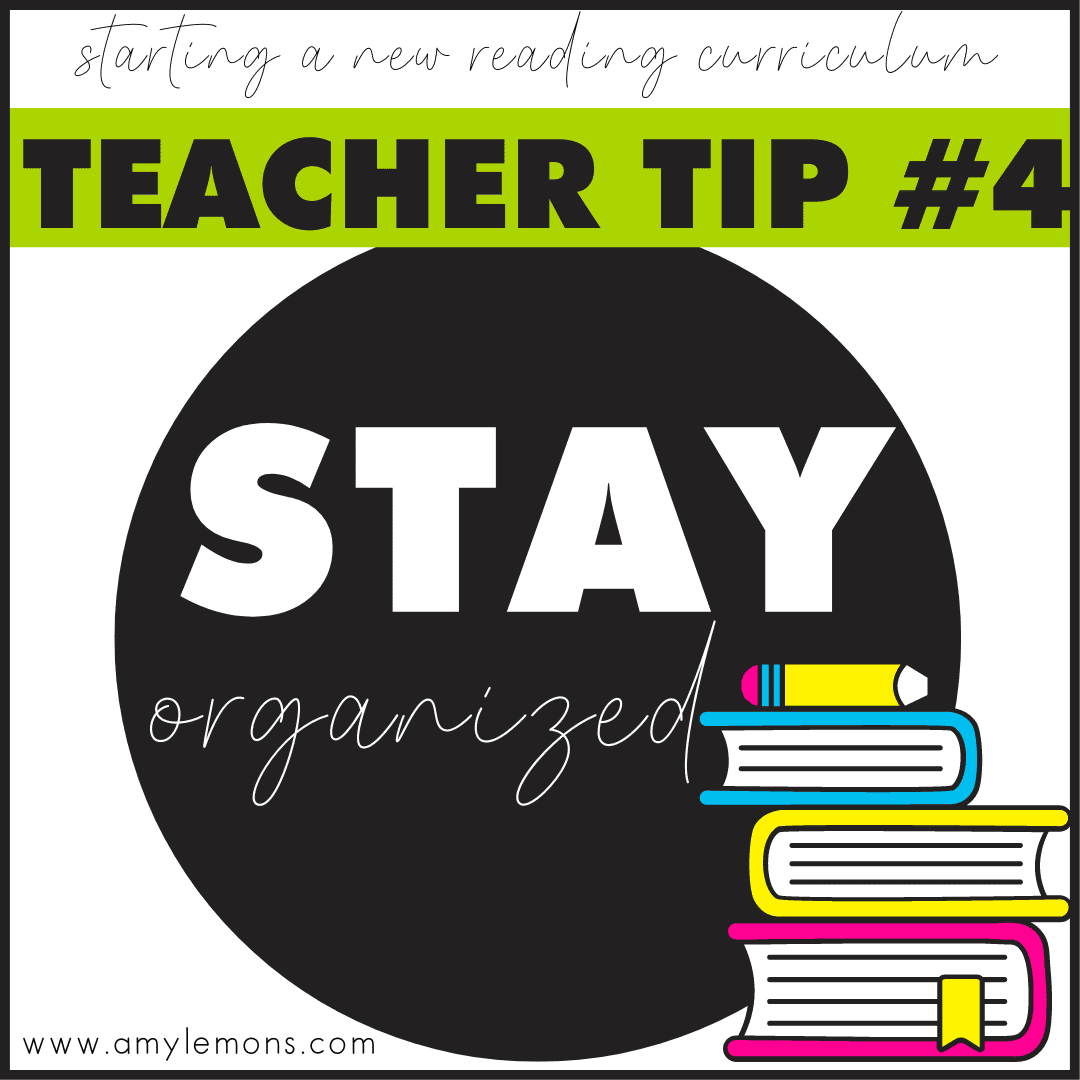
If there’s one huge piece of advice I can offer you, it is to stay organized. Both digitally and physically. Be sure that you have all of the files stored and ready to go as needed. You can do this by using a USB drive or cloud storage.
Save yourself a ton of time by printing off everything you need and storing them in folders and/or bins to be used over and over again. Along with the curriculum for Rooted in Reading, we include binder labels, bin labels, posters, and more so you have an organization system to keep up with all of the parts. You may find something similar for any new curriculum.
One teacher found success with using large containers to house reading curriculum materials and using a buddy system to get everything prepped.
“Be organized and get a system for keeping things. The binder did NOT work for me, but the large scrapbook container did. One folder for each story of the month inside. Try to find a buddy to help with copies. My best friend and I did RiR together and we would take turns copying for the week/eventually the month. I recommend printing one copy of EVERYTHING in the week. It helped us see what was there, and we could then choose what we wanted.”– Rooted in Reading Teacher
Once you’ve created your teaching plan, using an organization system to store everything in one place will keep you on top of your game and reduce the stress of trying to pull things each day!
If you need some ideas for organizing your reading curriculum, check out THESE posts.
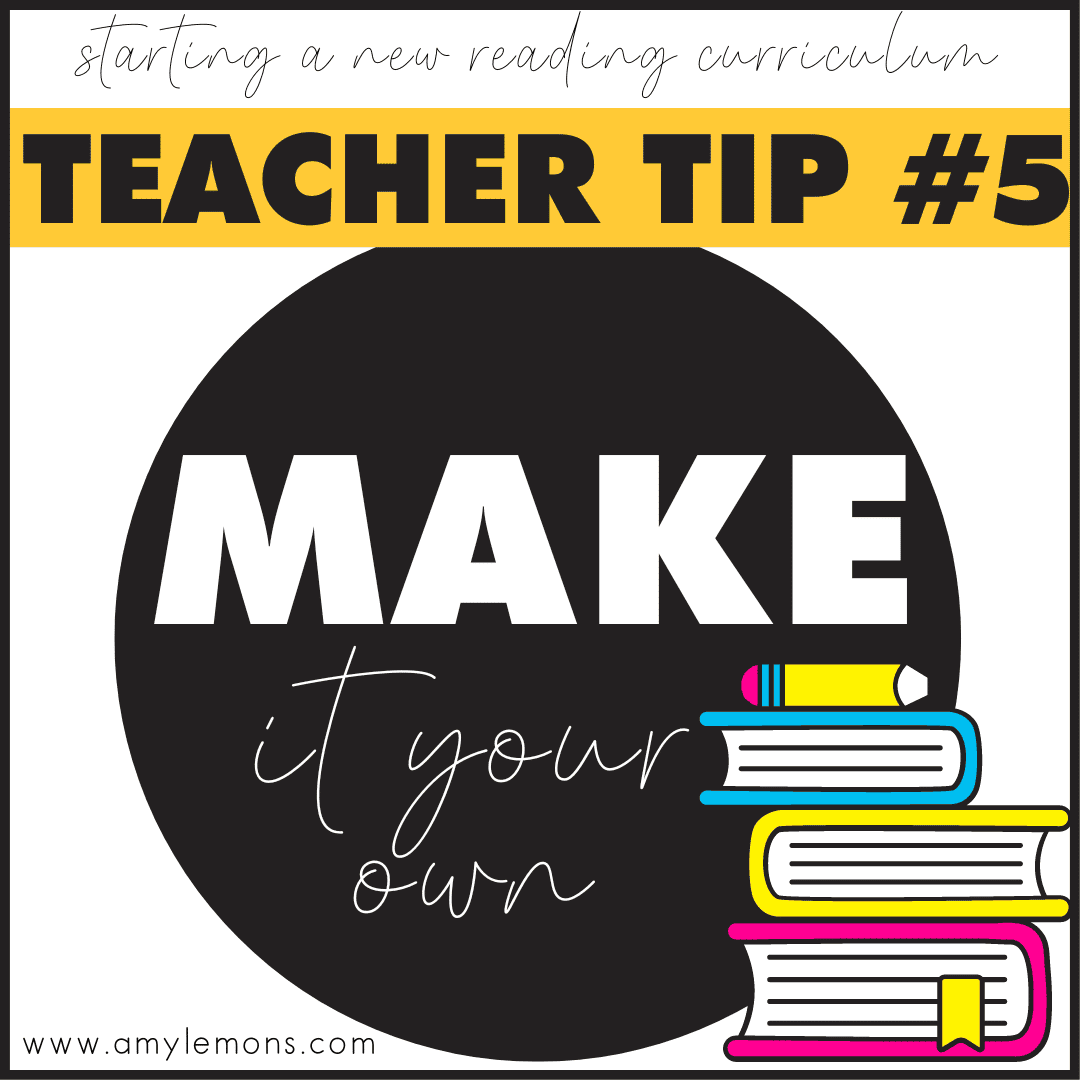
Last but certainly not least, make it your own. I know that we are often inundated with visuals of how everyone else teaches. On social media or from watching the classroom across the hall, it’s endless.
While having a teaching community is important and beneficial, once you close that classroom door, you are on your own and it’s up to you to ensure your students have what they need.
The best way to accomplish this is by adapting your reading curriculum or any curriculum to the culture and environment of your classroom while also meeting your students where they are. Here’s how one teacher tailors her approach.
“I decide which pieces I want to use and find out exactly how to fit them in my daily routine- for example: I use grammar during my writing block, vocab is always first thing before we read the book whole group, etc. I use a lot of the student pages in centers, so I take a lot of time to go over directions (and cutting and gluing). I share a video of the book on seesaw so they can go back and find what they need independently.” – Rooted in Reading Teacher
In our Rooted in Reading units, we include lesson plans for the entire week. Each day we outline a way you can teach and use each element. But guess what? You can totally throw those plans out if they don’t work for you!
Want to turn an independent activity into a partner activity? Go right ahead. Want to take your nonfiction readers and use them as guided reading practice? You’re more than welcome to!
With any new curriculum, you have to take some time to familiarize yourself with all of the elements, build your own unique teaching plans, and slowly but surely apply them.
“Enjoy it and don’t stress. Add in what your students need and don’t overwhelm yourself by trying to do it all.” -Rooted in Reading Teacher
If you are curious about our Rooted in Reading curriculum and found these tips helpful, check out everything we have to offer right HERE.
Do you have any tips for starting a new reading curriculum? Let me know in the comments!
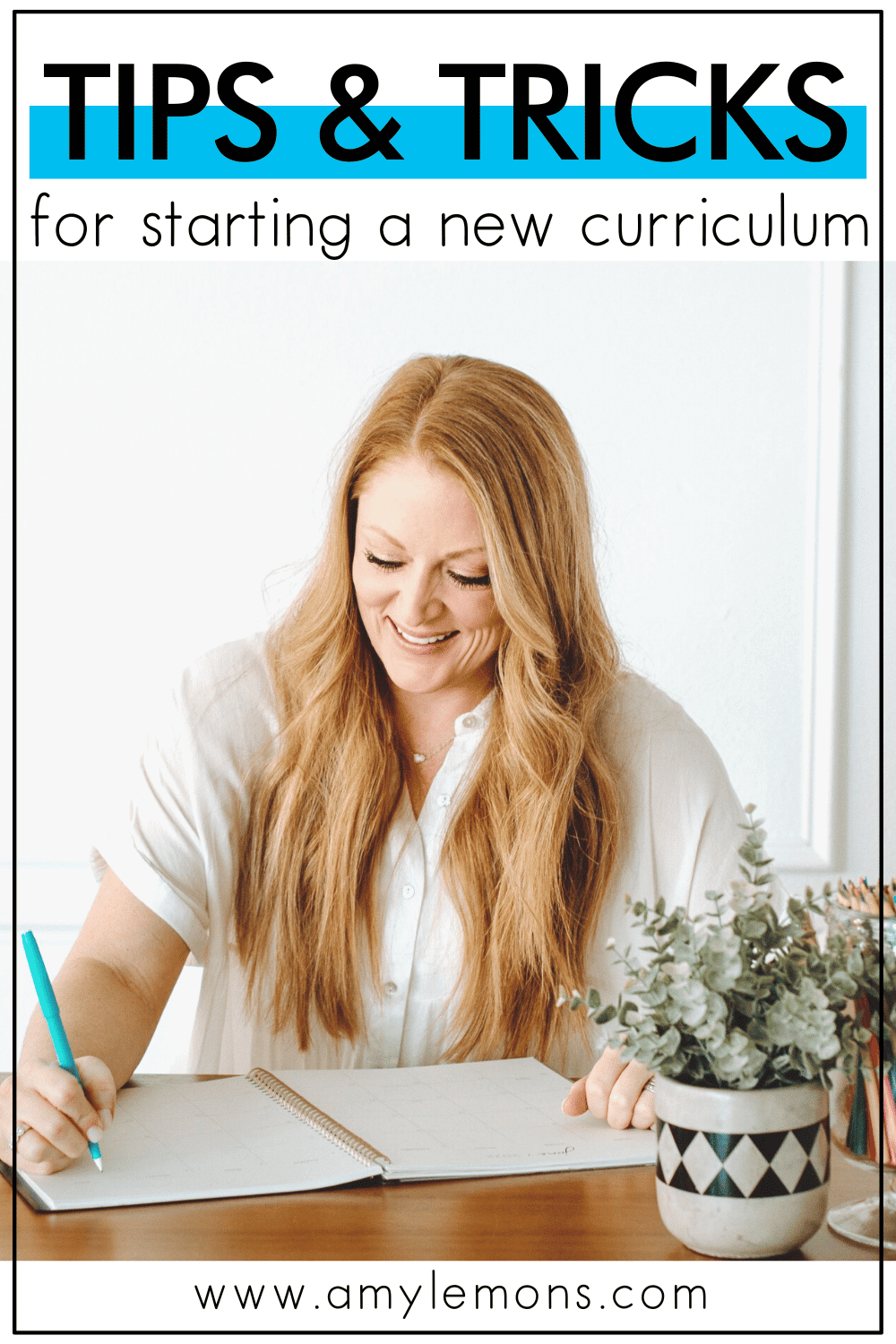

Hey, y’all! My name is Amy Lemons and I am passionate about providing students with both engaging and effective standards-based Math and ELA lessons.

Sample a day of Rooted in Reading with these lesson plans and activities for Reading Comprehension, Vocabulary, and Grammar!
